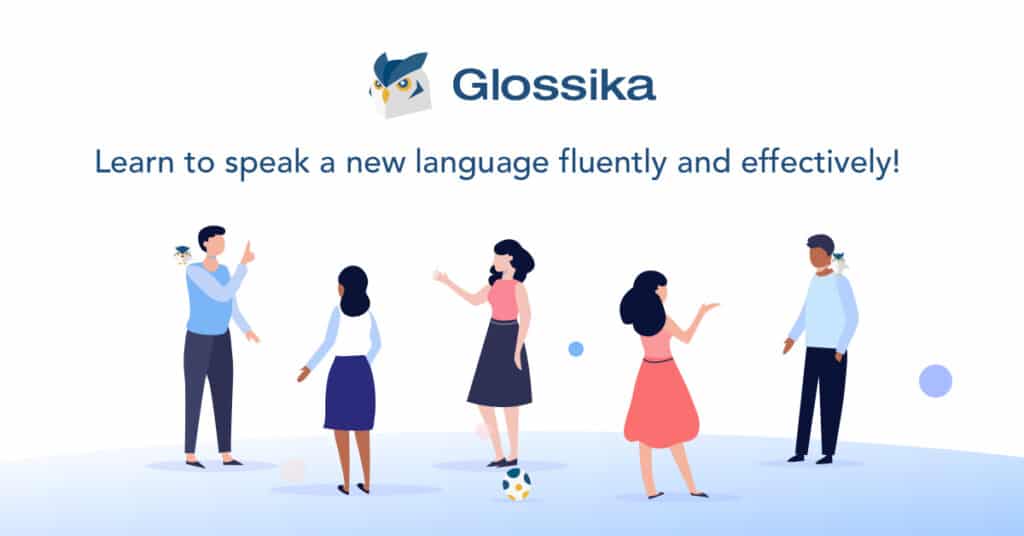As a seasoned language teacher, I’ve always been on the lookout for innovative methods to enhance language learning for my students. I’ve sifted through countless resources, tinkered with diverse strategies, and even gone the extra mile to integrate technology into my lessons. Still, nothing quite prepared me for the revolutionary impact of Artificial Intelligence (AI) on language learning.
AI is no longer a sci-fi concept confined to the realms of blockbuster movies. It has steadily been transforming various aspects of our lives, and education is no exception. When I first encountered AI in the form of a language learning tool, I felt that rush of excitement that every language educator knows all too well – the thrill of discovering a potentially game-changing resource.
In this blog post, we’ll explore how AI is shaping the future of language learning. We’ll take a look at some of the AI language learning tools and how they can complement traditional learning methods, and provide practical strategies to help you maximize your language learning experience with AI. So, whether you’re a language learner looking to revamp your learning journey or an educator seeking innovative approaches, there’s something in here for you. Let’s dive in!
AI: A Game Changer in Language Learning
Brief Background of AI in Education
AI, or Artificial Intelligence, refers to the development of computer systems that can perform tasks typically requiring human intelligence. These tasks include understanding natural language, recognizing patterns, learning from experience, and making decisions. The rise of AI isn’t solely due to recent advancements like the release of OpenAI’s ChatGPT. In fact, AI had, in recent years, already emerged as a significant trend in education, disrupting traditional teaching and learning methods. It has given rise to more interactive, personalized, and efficient learning experiences.
AI’s foray into education began with simpler applications, like automated grading systems and recommendation algorithms for personalized learning paths. But it wasn’t long before we saw it transforming more complex aspects of education, including language learning.

Unpacking the Revolutionary Role of AI in Language Learning
As a language teacher, I was initially skeptical about how a machine could facilitate something as nuanced and complex as language learning. But my reservations soon made way for admiration as I witnessed firsthand how AI could complement, and in some ways even enhance, traditional language learning techniques.
AI-powered language learning tools, like chatbots and language learning apps, are capable of offering a level of personalization and interactivity that traditional self-learning methods can seldom match. They can engage learners in one-on-one conversations, provide instant feedback, adjust the difficulty level based on the learner’s proficiency, and even simulate real-life scenarios for immersive learning experiences. What’s more, they’re accessible 24/7, making learning possible anytime, anywhere.
As language learning tools, they leverage machine learning algorithms that use natural language processing (NLP), speech recognition technology and other advanced features to provide learners with a personalized and efficient approach to acquiring a new language.
How AI Personalizes Language Learning and Why it Matters
AI’s ability to tailor language learning experiences to individual learners is, in my opinion, its most revolutionary aspect. Each learner is unique – they have their own learning pace, preferences, strengths, and weaknesses. Traditional one-size-fits-all teaching methods often fail to address these individual differences.
Enter AI – with its ability to analyze a learner’s performance in real-time, it can adapt the learning content, pacing, and strategies to suit the learner’s unique needs. Whether it’s slowing down the lesson pace for a concept that a learner finds difficult or introducing advanced exercises to challenge a quick learner, AI can make it happen.
Personalized language learning doesn’t just make the learning process more efficient – it also makes it more engaging. When learners engage with content that’s relevant and appropriate for their skill level, they’re more likely to stay motivated and committed to their language learning journey. And that’s what makes AI a real game changer in language learning.
AI Tools for Personalized Language Learning
Introduction to Various AI Tools for Language Learning
The digital landscape offers a multitude of AI tools designed to facilitate language learning. From AI-powered mobile apps like Duolingo, Babbel, and Mondly to AI chatbots such as ChatGPT, these tools leverage artificial intelligence to provide personalized and interactive language learning experiences.
ChatGPT
I put ChatGPT first because it’s the one I incorporate into my lessons on a regular basis. A product of OpenAI, ChatGPT is an AI-powered chatbot that can converse with users in a wide range of languages. It can be an invaluable tool for language practice, providing instant feedback, correcting mistakes, and even creating personalized practice texts. The biggest advantage is the real-time, interactive nature of learning with ChatGPT. However, its algorithm is based on the data it has been trained on, which means it may occasionally make language mistakes or may not fully comprehend cultural nuances.
I’ve created my own Free AI Language Tutor for this website, designed to simulate a conversation that I might have with you as a student, with the goal of providing personalized practice, engaging conversation, and helpful feedback. Try it out, I’d love to know what you think!
WordTap’s Interactive Paraphrasing Tutor
Paraphrasing is a crucial skill in language learning, enabling learners to understand and produce language flexibly. It helps in mastering vocabulary, grasping sentence structure, and improving overall communication fluency.
Our own interactive Paraphrasing Tutor is designed to refine and enhance English language skills through active engagement. This tool offers targeted paraphrasing exercises, adapting to various proficiency levels to ensure tailored learning experiences. With real-time feedback and alternative paraphrasing examples, learners can expand their vocabulary and master sentence structuring effectively. Ideal for those seeking to polish their language precision and fluency, WordTap’s tool embodies the fusion of AI efficiency with linguistic depth.
Glossika
Glossika is an AI-powered language learning platform that focuses on contextual language training. The program emphasizes fluency development through extensive repetition of sentences in various contexts. It offers a large library of sentences recorded by native speakers.
Its AI algorithms analyze learner progress and provide targeted feedback for improvement by adjusting the difficulty level based on individual proficiency, ensuring a personalized learning experience.
Through its interactive interface, Glossika enables users to listen, repeat, and practice sentences at their own pace. By focusing on context, Glossika helps users understand how words and phrases are used in real-life situations, enhancing natural speaking skills and overall fluency.
This is an approach that really works – and is one that I’ve utilized in my own teaching for years.
Duolingo
Duolingo is a popular language-learning app that uses gamification to make language learning fun and engaging. The app uses AI to personalize the learning experience for each user.
For instance, if you make a mistake, Duolingo provides immediate feedback and correction by identifying where you went wrong and explaining why. The app also offers interactive activities like translation challenges, listening comprehension exercises, and speaking practice sessions.
In addition, Duolingo uses machine learning algorithms to track your progress and adjust the difficulty level accordingly. This ensures that you’re always challenged but never overwhelmed.
Babbel
Babbel is another highly popular language-learning platform that uses AI to provide personalized lessons based on your level of proficiency and learning goals. One unique feature of Babbel is its focus on conversational practice with native speakers. The platform offers live virtual classes with certified instructors who can provide feedback on your pronunciation and grammar in real-time.
Babbel also utilizes NLP algorithms to simulate real-life conversations with chatbots so users can practice their speaking skills at any time. Additionally, Babbel’s AI algorithms track your progress across multiple devices so users can pick up right where they left off regardless of which device they use.
Rosetta Stone
Rosetta Stone is one of the pioneers in language learning software. The platform has been around since 1992 but has evolved over time by incorporating cutting-edge AI technologies to enhance the learning experience for its users. Rosetta Stone’s immersive language-learning approach involves using AI-powered speech recognition technology to provide feedback on pronunciation and accent.
The software also employs NLP algorithms to analyze grammar usage and sentence structure, ensuring that users are speaking correctly. In addition, Rosetta Stone provides access to live tutoring sessions with native-speaking instructors.
Memrise
Memrise is an AI-powered language learning app that specializes in helping users memorize vocabulary effectively. The app utilizes spaced repetition algorithms, a technique that optimizes learning by presenting words at specific intervals based on individual progress. This approach ensures that users review words at the optimal time for long-term retention.
The app incorporates mnemonic techniques, such as vivid imagery and memorable stories, to aid in vocabulary acquisition. Additionally, Memrise provides audio and video clips featuring native speakers to enhance listening and pronunciation skills. The AI algorithms analyze user performance and adapt the learning experience to focus on areas that require more attention.
Pimsleur
Pimsleur is a language learning method that emphasizes audio-based instruction. The program focuses on conversational skills and practical language usage. With Pimsleur, users can engage in interactive conversations to practice speaking and listening skills. The app’s Voice Coach feature utilizes AI to give you feedback in most languages speech recognition technology to assess pronunciation and provide feedback, helping learners refine their speaking abilities.
The AI algorithms of Pimsleur adapt the difficulty level based on user performance, ensuring a personalized learning experience. The program incorporates spaced repetition to reinforce vocabulary and grammar concepts. Its audio-based approach allows users to practice language skills conveniently, even while on the go.
Busuu
Busuu is an AI-powered language learning platform that promotes community engagement and interaction. The app offers language courses in various languages, with lessons designed by experts and native speakers. Through AI algorithms, Busuu personalizes the learning experience according to individual goals and proficiency levels.
One notable feature of Busuu is its emphasis on community participation. Learners can interact with native speakers through writing exercises and speaking practice. The AI-powered correction feature provides valuable feedback on writing assignments, helping learners improve their grammar and sentence structure.
Busuu also incorporates speech recognition technology for pronunciation practice and provides vocabulary exercises and quizzes for comprehensive language learning. The AI algorithms track user progress and recommend relevant content to ensure continuous improvement.
How AI Complements Traditional Language Learning Techniques
How AI Can Be Used in Conjunction with Traditional Learning Methods for a Holistic Learning Experience
AI-powered tools and traditional language learning techniques are not mutually exclusive; rather, they complement each other wonderfully to create a holistic language learning experience. While traditional methods provide a solid framework for understanding language rules and structure, AI tools add flexibility, personalization, and interactivity that elevate the learning process.

Imagine using a textbook to learn the grammatical rules and then reinforcing that learning by conversing with an AI chatbot like ChatGPT. Or, after a classroom lesson, using an app like Duolingo or Babbel to practice new vocabulary in a fun and engaging way. The AI tools offer immediate feedback and allow learners to apply the language rules in a safe, low-pressure environment.
By employing AI tools along with traditional methods, learners get the best of both worlds. The structured approach of conventional learning provides a strong foundation, while the AI tools offer a personalized, interactive experience that helps to improve fluency and comprehension. This blended approach can accelerate the language learning process and make it more engaging and effective.
The online language school Lingoda conducted a survey around this topic and found that 39% of learners would like guidance from both a human teacher and AI combined. At the same time, 85% of respondents believe human interaction is very important or somewhat important in new language learning experiences.
Real-Life Examples of Combining AI and Traditional Methods for Personalized Learning
Many language learners, including myself and my students, have found immense success by integrating AI tools with traditional learning techniques. For instance, I use AI chatbot ChatGPT in my teaching routine to create custom texts for my students to read out loud. This interactive practice not only reinforces the traditional lesson-based learning but also improves their pronunciation and speaking skills by offering always-available practice opportunities.
By combining AI and traditional learning methods, we can create a truly personalized language learning experience that caters to the unique needs and preferences of each learner.
Getting the Most Out of AI for Language Learning
Essential Tips on How to Effectively Use AI Tools for Language Learning
Making the most of AI tools for language learning requires an understanding of how best to incorporate them into your learning process. Here are some key tips to ensure you’re effectively leveraging the power of AI:
Combine AI with traditional methods: As we’ve already explored, AI and traditional learning methods work wonderfully together. Don’t solely rely on AI; instead, use it as a supplement to reinforce and practice what you’ve learned through traditional techniques. For example, using personalized texts and dialogues to suit your vocabulary needs. Check out our post ‘75 Ways to Learn Foreign Vocabulary‘ for an overview of methods to learn vocabulary.
Consistency is key: Learning a language takes time. Use AI tools regularly, preferably daily, to continuously expose yourself to the language and reinforce your learning.
Interact actively: AI tools, especially chatbots like ChatGPT, are designed for interaction. Don’t hesitate to converse with the AI, ask questions, make mistakes, and learn from them. Active interaction will speed up your learning process. They’re available 24/7 and are like having a personal tutor in your pocket!
However, unlike human tutors, while interacting with chatbots like ChatGPT it’s important to remember that they have limitations. They may seem really smart, but they can’t really intuitively understand your difficulties and challenges. So don’t hesitate to tell the chatbot that it needs to adjust to your level better, change the subject, or provide better texts. Its feelings won’t be hurt because it doesn’t have any! Its main purpose is to serve your needs.
Strategies to Optimize AI Tools to Suit Individual Language Learning Needs
Each learner is unique, and so are their language learning needs. Here’s how you can optimize AI tools to cater to your individual needs:
Define your learning goals: Whether you’re learning for travel, professional purposes, or simply for the joy of learning a new language, defining your goals can help you align the AI tools to suit your needs. Once you have defined your needs you can then make sure your AI tool of choice addresses those needs specifically.
Explore and experiment: Every AI tool has its strengths and weaknesses. Experiment with different tools to find which ones suit your learning style best. For instance, if you learn better through visual aids, apps like Mondly or Duolingo, which have a strong visual component, might be beneficial for you.
Seek feedback: AI tools, especially AI chatbots, are excellent at providing immediate feedback. Use this feedback to identify your weak areas and focus on improving them.
Insights on Setting Realistic Expectations When Using AI for Language Learning
AI tools offer many benefits for language learning, but it’s important to set realistic expectations. Remember that while AI can significantly aid your learning journey, it can’t replace the value of interacting with native speakers or completely mimic the cultural nuances of a language. Also, although AI tools can provide instant feedback and corrections, they may not always understand context in the way a human would. Hence, it’s beneficial to use AI as part of a broader learning strategy, not as a standalone solution.

Gazing into the Future: AI and Language Learning
The Potential Evolution of AI in Language Learning
As we stand on the brink of a new era in educational technology, it’s exciting to contemplate how AI will continue to revolutionize language learning. The growth of AI in education has been exponential, and there’s every reason to believe that this trend will persist. As machine learning algorithms continue to improve and data sets grow, AI tools will likely become even more personalized, interactive, and efficient. We can expect future AI tools to better understand the nuances of language and context, and to offer an increasingly immersive and interactive learning experience.
Furthermore, the integration of AI with other emerging technologies, such as virtual and augmented reality, could redefine our understanding of language learning. Imagine practicing your Spanish in a virtual cafe in Barcelona, or honing your Japanese while navigating a bustling Tokyo street, all from the comfort of your home. These experiences could become reality sooner than we think.
Being prepared for an AI-Driven Future in Language Learning
As we anticipate these technological advancements, it’s crucial that we adapt our learning strategies to leverage these tools effectively. Becoming comfortable with technology, embracing the shift towards self-directed learning, and understanding how to personalize AI tools to suit our needs are skills that will serve us well in the AI-driven future of language learning.
Yet, despite the increasing role of technology, the human element remains indispensable. No matter how advanced AI tools become, they cannot entirely replace the value of human interaction or the experience of cultural immersion. Therefore, integrating AI tools with traditional learning methods, real-life practice, and cultural experiences will likely remain key to effective language learning.
Personal Insights and Tips for Embracing AI in Language Learning
In my own journey as a language teacher, I’ve seen how AI can be a game changer. But as with any tool, the key to success lies in how we use it. My advice to you as you embark on your language learning journey with AI is to maintain an open mind, embrace the process of trial and error, and stay committed to your learning. Remember, learning a language is not just about mastering vocabulary and grammar; it’s about being open to seeing the world a little bit differently.
As you explore and experiment with different AI tools, keep in mind that no single tool will provide a complete solution. Instead, look for ways to combine various tools to create a learning experience that suits you best. Use AI as your language companion, your practice buddy, your pronunciation guide, and your grammar checker, but also seek out real-life interactions, engage with native speakers, immerse yourself in the culture, and, above all, enjoy the journey of language learning.

Frequently Asked Questions
1. What is AI in the context of language learning?
AI, or artificial intelligence, refers to computer systems or machines capable of performing tasks that usually require human intelligence. In the field of language learning, AI can encompass chatbots, interactive software, language learning apps, and more that use intelligent algorithms to deliver personalized learning experiences.
2. Is AI replacing traditional language learning methods?
AI is not necessarily replacing traditional methods, but rather complementing them. It allows for a more personalized and interactive learning experience but is typically most effective when used in conjunction with traditional study methods.
3. How do AI language learning tools personalize the learning process?
AI language learning tools can adapt to an individual’s level of proficiency, learning style, and specific language objectives. They can offer personalized feedback, tailor learning materials to the learner’s level, and provide immersive and interactive language learning experiences.
4. Are there any drawbacks to using AI for language learning?
As with any technology, there can be potential drawbacks, including reliability of the AI in correctly interpreting and teaching nuanced language features, the risk of becoming overly reliant on AI and neglecting human interaction, and issues related to data privacy.
5. Can AI help with practicing pronunciation and accent training?
Yes, certain AI tools can analyze a user’s speech, compare it to native speaker norms, and provide corrective feedback. This can be a valuable aid for practicing pronunciation and reducing foreign accent.
6. Is AI-based language learning suitable for all age groups?
AI-based learning can be adapted to suit learners of all age groups. However, the effectiveness of AI-based learning can depend on the learner’s comfort and familiarity with using digital technology.
7. What can we expect from the future of AI in language learning?
While it’s hard to predict with certainty, the future of AI in language learning could include more sophisticated personalization, improved speech recognition and synthesis, more interactive and immersive experiences, and better integration with traditional learning methods.
Plotting Your Course: AI and the Language Learning Expedition Ahead
As we look back on our exploration of AI in personalized language learning, it’s clear that we are standing on the precipice of a revolutionary transformation in how we learn languages. AI is no longer a futuristic concept, but a present reality that is dramatically reshaping the landscape of language education. It’s our duty and our privilege as educators and learners to embrace this change, and to leverage it to the fullest extent to expand our language skills and our worldviews.
AI tools, with their remarkable capacity for personalization and interactive learning, are game changers in language education. They offer unprecedented opportunities for individualized instruction and practice, and their benefits are being seen around the world. But as we have seen, these tools are most effective when used in conjunction with traditional language learning methods. Together, these approaches can create a holistic and immersive learning experience that is truly transformative.
Yet, as with any new endeavor, the path to effective AI-assisted language learning is one of exploration, experimentation, and constant learning. There will be challenges to overcome and new skills to learn. But remember, you’re not alone in this journey. As language learners, educators, and technologists, we’re all in this together.
My parting words to you as you embark on this exciting journey is this: Embrace the possibilities. Be curious, be flexible, and above all, be patient with yourself.
Language learning is not just about the destination—it’s about the journey. And with AI, what a thrilling journey it promises to be. So set sail today, knowing that with every word you learn, you’re not just gaining a language, but a whole new perspective on the world. Happy learning!




